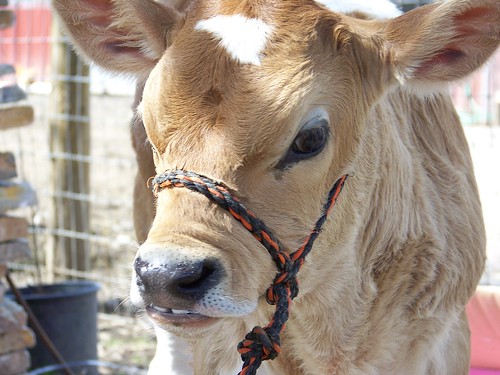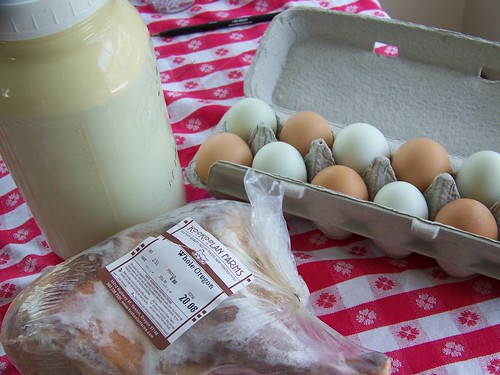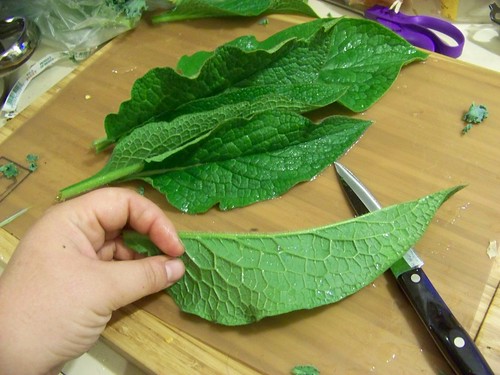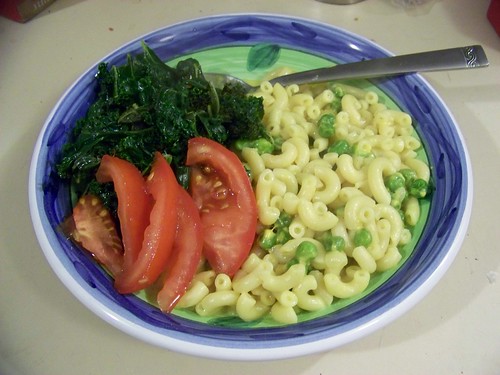So the saying goes, and so it goes in the kitchen. As a relatively skilled and confident cook who prim
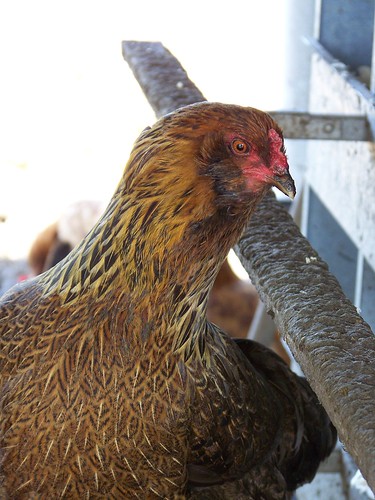 arily cooks only for myself I usually do pretty good with liking what I cook. I rarely have outright failures and I can usually find some silver lining even in my flops. The exception makes the rule, however.
arily cooks only for myself I usually do pretty good with liking what I cook. I rarely have outright failures and I can usually find some silver lining even in my flops. The exception makes the rule, however.Two months ago I bought a tub of chicken livers from Kookoolan Farms at our year round farmers market here in SW Portland. I had never cooked with chicken livers before and honestly never really eaten them either. I was a little intimidated but knew I would get around to them eventually.
Liver is quite possibly the most nutrient dense animal food on earth. Oysters may be a close second but liver is an amazing super food. Liver is chock full of vitamins A, B12, and folic acid. It is amazingly high in bioavaliable iron, copper, zinc and chromium. It contains nitrogen compounds that the body uses to produce DNA and RNA. It's also an amazing source of CoQ10. Seriously, this is some healthy health food.
Unfortunately, most Americans aren't very fond of organ meat. We didn't grow up eating it (possibly because our grandparents had to eat it during hard economic times and forced their kids to eat it who swore to never force their kids to eat it) and many folks think it is gross or dirty. There is also advice out there to avoid liver when pregnant because of it's high levels of retinol, a form of Vitamin A that seems to have been linked with birth defects.
Actually, even main stream nutritionists agree that an animal's liver doesn't store toxins, it just repackages them for storage elsewhere in the body. The vitamin A debate seems ridiculous to me. Native people ate liver as regularly as possible and no one died
 of vitamin A poisoning and if birth defects were common people would have stopped eating liver. The Wise Traditions article by Lynn Razaitis disucsses this issue in depth. She says that studies in Italy and Switzerland in the late 1990s, as well as almost all medical text books written before WWII indicate that liver is fine for pregnant women with doses of 30,000-50,000 IUs of Vitamin A. That's 4-5 oz of beef liver or 7-8 oz of chicken liver. She also quotes the Merck manual in noting that the few cases of Vitamin A poisioning are either due to synthetic vitamin A in multivitamins, or due to eating large portions of polar bear or seal liver. The synthetic vitamin toxicity was at doses 100,000 IU of vitamin A over many months. It takes about 10 oz of beef liver or 16 oz of chicken liver to give you that much vitamin A. Every day. For months.
of vitamin A poisoning and if birth defects were common people would have stopped eating liver. The Wise Traditions article by Lynn Razaitis disucsses this issue in depth. She says that studies in Italy and Switzerland in the late 1990s, as well as almost all medical text books written before WWII indicate that liver is fine for pregnant women with doses of 30,000-50,000 IUs of Vitamin A. That's 4-5 oz of beef liver or 7-8 oz of chicken liver. She also quotes the Merck manual in noting that the few cases of Vitamin A poisioning are either due to synthetic vitamin A in multivitamins, or due to eating large portions of polar bear or seal liver. The synthetic vitamin toxicity was at doses 100,000 IU of vitamin A over many months. It takes about 10 oz of beef liver or 16 oz of chicken liver to give you that much vitamin A. Every day. For months.I don't know about you, but I couldn't get 16 oz of chicken liver in me every day for a month. I couldn't get it in me over the course of a month if my recent liver experience is any indication. Remember how I said I don't usually have flops in the kitchen? Yeah, my chicken liver pate was a flop. I think it tasted exactly like it was supposed to, I just didn't like it. Here's the recipe I used. It's a variation on the recipe from Nourishing Traditions and I think it's a good one. It's just so, well, livery.
Chicken Liver Pate
3 tbs butter
1 lb chicken liver
1/2 lb mushrooms
1 medium yellow onion
2/3 c white wine
2 clove garlic
3/4 tsp ground dried rosemary
1/4 tsp ground dried sage
1/4 tsp crumbled dried organo
1/4 tsp dried dill
1 tbs lemon juice
4 tbs butter
salt and pepper
*Sautee the onion and mushroom, seasoned with pepper and a little salt, in 3 tbs of butter until soft. Add the liver, trimmed of the tendons and cook until firm but still barely pink on the inside. Add garlic and herbs to the pan then the wine. Cook over medium heat until the pan is almost dry. Let mixture sit until cool.
*Pour the liver and onion mixture into a food processor. Grind until a coarse paste and then add soft, but not melted, butter a spoonful at a time. Grind until smooth. Add the lemon juice and taste for salt and pepper.
 This recipe actually had a lot of interesting flavor. I think in the future I would increase the herbs a bit but the mushrooms and liver really stood out. The problem is, well, that liver flavor. It's kind of metallic, and kind of earthy. But not in a good way. Luckily my roommate loved it and I found that I could get down a couple tablespoons at a time in a sandwich with radishes, cheese and mustard. I still have about 4 oz in the freezer. Maybe in a month or two I'll be ready to go back for round two.
This recipe actually had a lot of interesting flavor. I think in the future I would increase the herbs a bit but the mushrooms and liver really stood out. The problem is, well, that liver flavor. It's kind of metallic, and kind of earthy. But not in a good way. Luckily my roommate loved it and I found that I could get down a couple tablespoons at a time in a sandwich with radishes, cheese and mustard. I still have about 4 oz in the freezer. Maybe in a month or two I'll be ready to go back for round two.Photo by These Days in French Life
Do you have a liver recipe you like? Have you ever eaten a liver pate that you really enjoyed? What do your friends, kids, spouse, housemates say about liver? Like runny egg yolks, I'll choke it down until I like it... it's just that nutritious.
For more real food recipes and tips check out the Real Food Wednesdays blog carnival!!



